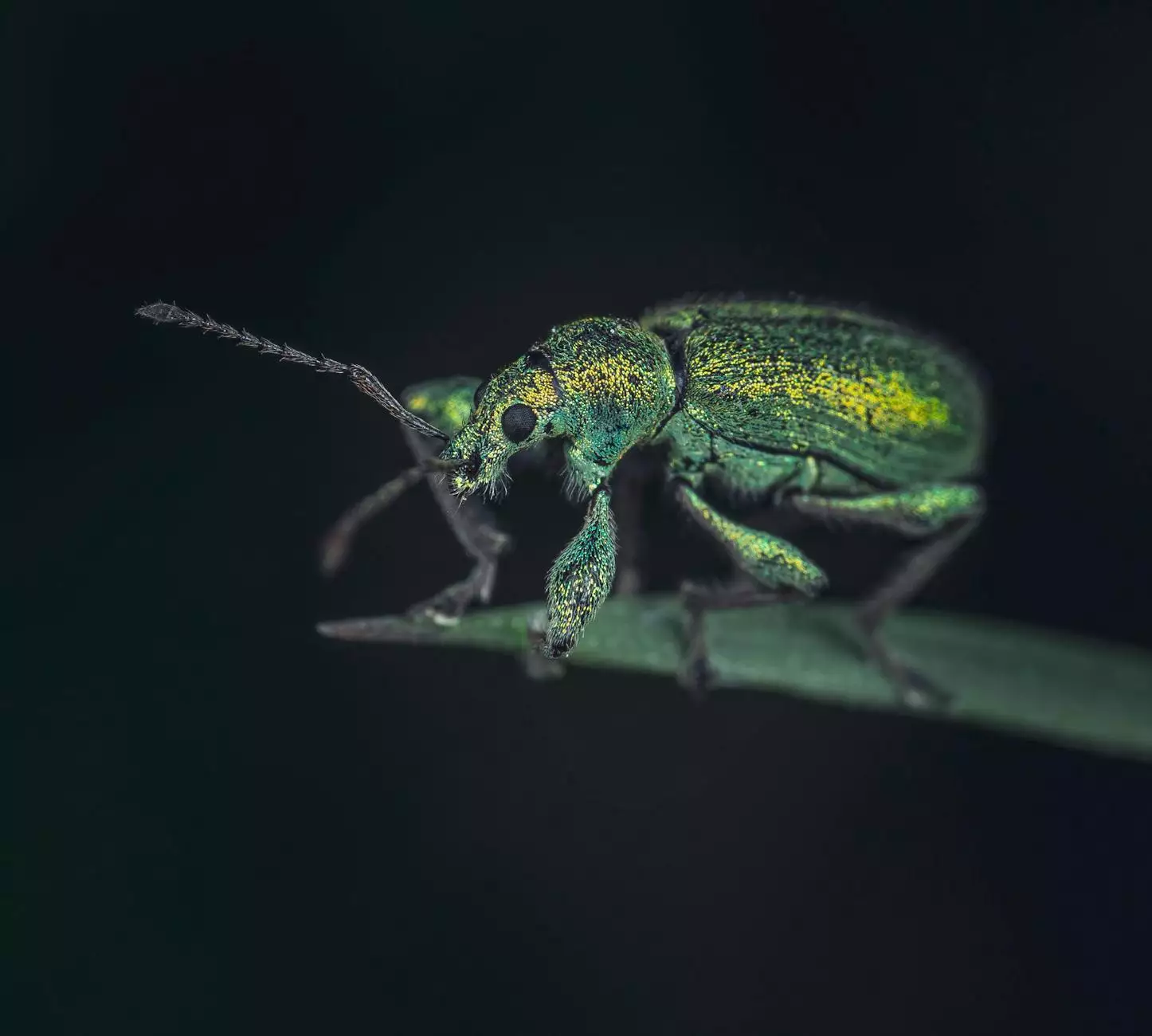Granary Weevil Control: Essential Strategies for Farmers

The granary weevil is a significant pest that poses a threat to grains stored in granaries and silos. Effective granary weevil control is vital for maintaining the quality of your harvest and preventing economic losses. This article explores comprehensive strategies for farmers to manage and control granary weevil infestations effectively, ensuring the health of their farming operations and the safety of their produce.
Understanding the Granary Weevil
The granary weevil (Sitophilus granarius) is a small beetle that primarily targets a wide variety of stored grains, including wheat, barley, oats, and corn. Recognizing the characteristics and behavior of this pest is the first step toward effective control.
- Life Cycle: The granary weevil undergoes complete metamorphosis, including the egg, larval, pupal, and adult stages. Female weevils lay eggs inside grains, which hatch into larvae that feed internally, causing significant damage.
- Identification: Adults are small (about 3-5 mm), have elongated bodies, and characteristic long snouts. The color ranges from reddish-brown to dark brown.
- Signs of Infestation: Look for small holes in grain kernels, powdery frass, and a musty odor in stored grain. These are clear indicators of granary weevil presence.
Effective Granary Weevil Control Methods
Implementing a multi-faceted approach to granary weevil control is essential. Here are various strategies that can be employed to manage and prevent infestations:
1. Prevention and Proper Storage Practices
Preventing granary weevil infestations starts with proper storage methods:
- Clean and Inspect Storage Facilities: Before storing grains, ensure that all storage areas are thoroughly cleaned and inspected for any signs of previous infestations.
- Use Proper Packaging: Store grains in airtight containers. This not only prevents weevil entry but also helps maintain grain quality.
- Monitor Temperature and Humidity: Keep storage areas cool and dry. Granary weevils thrive in warm, humid environments, so maintaining ideal conditions can deter infestations.
2. Regular Monitoring and Inspection
Regularly monitoring your grain storage facilities is crucial for early detection of granary weevil infestations. Consider the following:
- Frequent Checks: Inspect grain regularly for signs of weevils. Early detection can help you implement control methods before the infestation spreads.
- Pheromone Traps: Use pheromone traps to catch adult weevils and monitor their presence. This can help inform your control strategies.
3. Biological Control Methods
Utilizing natural predators and biological agents can provide environmentally friendly control options:
- Beneficial Insects: Introduce natural predators like parasitic wasps that target weevil larvae.
- Entomopathogenic Nematodes: These microscopic worms can infect weevil larvae, providing a biological method of control.
4. Chemical Control Measures
In cases of severe infestations, chemical treatments may be necessary. Here’s what to consider:
- Insecticides: Apply approved insecticides specifically targeting granary weevils. Follow all label instructions and regulations to ensure safe application.
- Fumigation: Fumigating grain storage areas can effectively eliminate weevil populations but requires careful handling and preparation.
Integrating Control Strategies
An integrated approach combining multiple control strategies is often the most effective way to manage granary weevil populations. Here are some best practices:
- Combine Methods: Use a mix of biological, cultural, physical, and chemical controls. This reduces reliance on any single method and increases overall effectiveness.
- Train Staff: Ensure that all staff involved in grain handling and storage are trained in identification and management strategies for granary weevils.
- Record Keeping: Maintain logs of inspections, treatments, and observations to help adjust management strategies over time.
Conclusion: Commitment to Granary Weevil Control
The challenge of granary weevil control demands a committed approach from farmers. By understanding the life cycle and behavior of this pest, implementing rigorous prevention strategies, regularly monitoring storage conditions, and applying both biological and chemical methods as needed, grain producers can protect their harvests from the destructive nature of granary weevils.
The health of your grains and the success of your farming operations depend on proactive measures against this annoyance. Utilize the methods outlined in this article to ensure that your crops remain safe from infestation and that you achieve optimal results in your agricultural endeavors.
For more insights and support on granary weevil control and farming equipment repair, visit tsgcinc.com.









